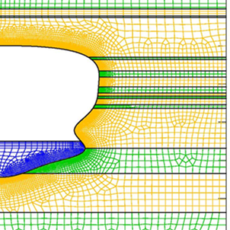Cavern Roof Stability for Natural-Gas Storage Caverns in Bedded Salt
Developing a design criterion to assess and prevent roof collapse in natural-gas storage caverns in bedded salt.
This project objective was to develop an improved design criterion that can be used to assess the long-term geotechnical integrity of natural-gas storage caverns in bedded salt. Preventing roof collapse is the most critical issue for storage caverns in bedded salt, and the key to preventing a roof collapse is maintaining a competent layer of salt above the cavern. The new design criterion provided an improved method for evaluating the potential for salt failure over the range of possible stress states that were experienced by the salt surrounding and overlying a cavern.
The scope of work included performing geologic analysis, laboratory testing, theoretical development, and numerical analysis. A matrix of laboratory tests was conducted on core from the Appalachian Basin. Special laboratory tests were conducted to provide test data at the states of stress that are prevalent in salt and form the cavern roof. The data from these tests were used to develop a failure criterion for the roof salt in bedded salt caverns. Numerical simulation models were developed based on the characteristics of the Appalachian Basin; these models and the newly developed failure criterion were used to evaluate the effect of basic design parameters on cavern roof salt stability.
This project was the first time that triaxial extension tests performed by the RESPEC laboratory were used to help develop a salt failure criterion.



Stay in Touch